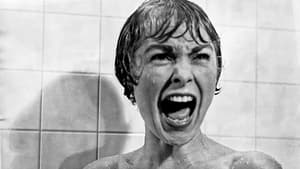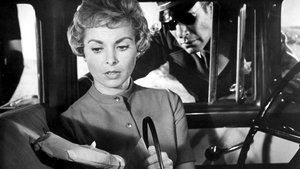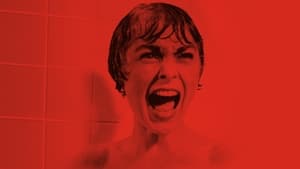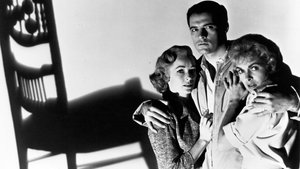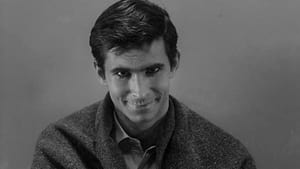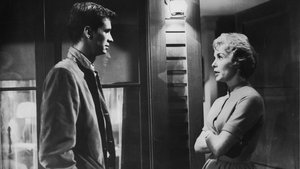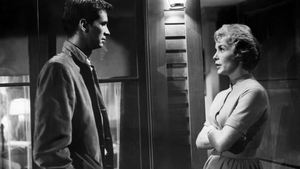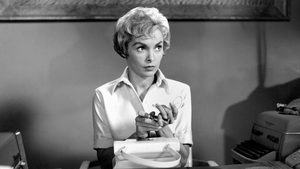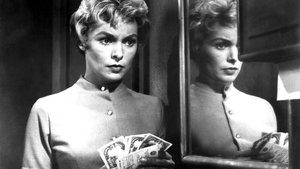Video Sources 0 Views
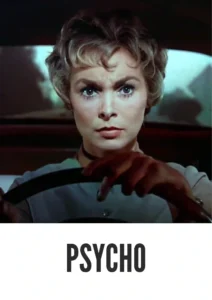
Synopsis

Dive into the twisted world of Alfred Hitchcock’s Psycho, the quintessential horror thriller from 1960, now brilliantly colorized to bring a new dimension of terror. This landmark film, starring Anthony Perkins and Janet Leigh, redefined the boundaries of suspense and shock in cinema. Perfect for horror aficionados and classic film buffs, this HD download offers a fresh, yet faithful, perspective on one of the most analyzed and influential movies ever made. Discover why Psycho remains a cultural touchstone, setting new standards for violence, sexuality, and psychological depth on screen.
Psycho masterfully unfolds the story of Marion Crane (Janet Leigh), a secretary on the run after impulsively stealing $40,000. Seeking refuge from a storm, she checks into the secluded Bates Motel, managed by the peculiar Norman Bates (Anthony Perkins). Norman, seemingly harmless, lives under the oppressive presence of his mother in the eerie house overlooking the motel.
During her stay, Marion decides to return the stolen money, seeking to right her wrong. However, her plans are cut short when she meets a grisly end in the infamous shower scene. The film then shifts focus to Marion’s sister, Lila (Vera Miles), and her lover, Sam Loomis (John Gavin), as they team up with a private investigator, Milton Arbogast (Martin Balsam), to unravel the mystery behind Marion’s disappearance. Their investigation leads them to the dark secrets of the Bates Motel and the horrifying truth about Norman and his mother. The climax reveals a shocking twist, exposing Norman’s disturbed psyche and the true identity of the killer. Psycho is a chilling exploration of the human mind, blurring the lines between reality and illusion, and cementing its place as a cornerstone of the horror genre.
The film boasts a stellar cast that delivers unforgettable performances:
-
Anthony Perkins as Norman Bates
-
Janet Leigh as Marion Crane
-
Vera Miles as Lila Crane
-
John Gavin as Sam Loomis
-
Martin Balsam as Detective Milton Arbogast
Psycho brilliantly combines elements of the horror, thriller, and mystery genres. Its innovative approach to suspense, coupled with its exploration of psychological themes, makes it a groundbreaking work in cinematic history. Often considered a pre-code thriller, Psycho pushes the boundaries of what was acceptable on screen, paving the way for future generations of filmmakers.
Released in 1960, Psycho marked a departure for Alfred Hitchcock, who financed the film himself and shot it in black and white using his Alfred Hitchcock Presents television crew to cut costs. Despite initial mixed reviews, the film’s box-office success and audience reaction led to a critical re-evaluation, solidifying its status as one of Hitchcock’s greatest achievements. Psycho challenged the norms of filmmaking, proving that a low-budget, black-and-white production could captivate audiences with its suspenseful storytelling and shocking twists.
This colorized version of Psycho offers a contemporary viewing experience while preserving the original film’s chilling atmosphere. The meticulous colorization process involved detailed analysis of each scene, assigning hues that enhance the psychological undertones and dramatic tension. Advanced digital techniques were used to ensure the colors remain true to the film’s intended mood, adding depth to the characters and settings. By bringing Psycho into color, a new generation can appreciate Hitchcock’s masterpiece in a format that resonates with modern sensibilities. While purists may prefer the original black and white, this colorized version provides a unique opportunity to explore the film’s themes and artistry from a fresh perspective. Whether you’re a long-time fan or a newcomer, the colorized Psycho is a captivating cinematic experience.
-
Alfred Hitchcock’s Psycho
-
: Alfred Hitchcock
-
: Joseph Stefano, based on the novel by Robert Bloch
-
: John L. Russell
-
: George Tomasini
-
: Shamley Productions
-
: Paramount Pictures
-
: 109 minutes
-
: MP4
-
: HD (1080p)
-
: Compatible with most devices, including smartphones, tablets, computers, and smart TVs.
Psycho (1960) is universally acclaimed as a masterpiece of suspense and horror. Its innovative techniques in cinematography, sound design, and storytelling have influenced countless filmmakers. The film continues to be studied and celebrated for its psychological depth, iconic performances, and shocking twists. From the groundbreaking shower scene to Norman Bates’ haunting persona, Psycho remains a cultural touchstone, setting the standard for the horror genre.
-
: What is Psycho about?
-
A: Psycho is a suspenseful horror thriller about a woman who encounters a disturbed motel owner with a dark secret.
-
-
: Why is Psycho considered a classic film?
-
A: Psycho is a classic film due to its innovative storytelling, suspenseful atmosphere, and groundbreaking techniques that revolutionized the horror genre.
-
-
: Is this version of Psycho colorized?
-
A: Yes, this version has been professionally colorized to offer a fresh perspective on the classic film.
-
-
: What makes Psycho so influential?
-
A: Psycho is influential for its psychological depth, iconic scenes, and its impact on future generations of filmmakers.
-
-
: What is the download format?
-
A: The download format is MP4, which is compatible with most devices.
-
-
: What resolution is the download?
-
A: The resolution is HD (1080p), providing a high-quality viewing experience.
-
Watch Psycho Today!
